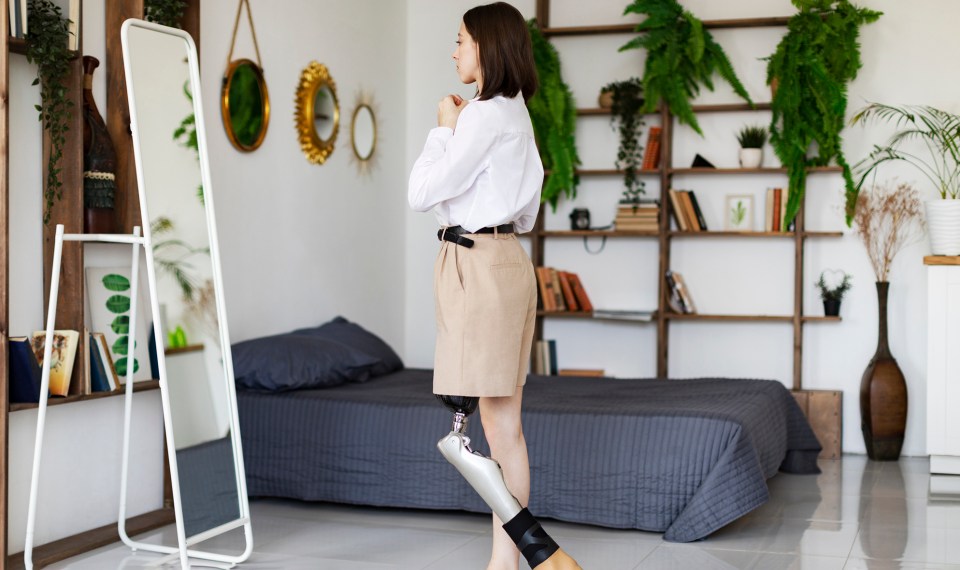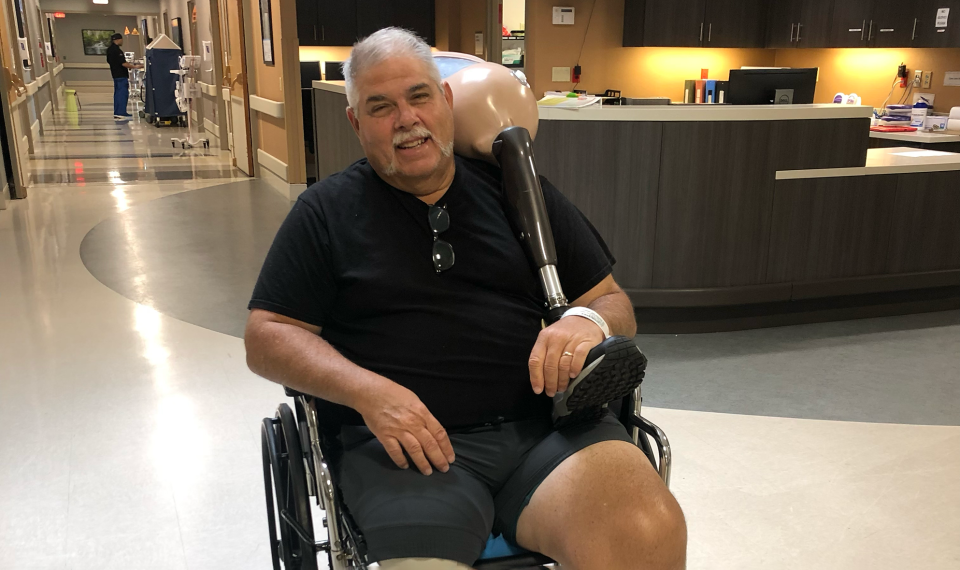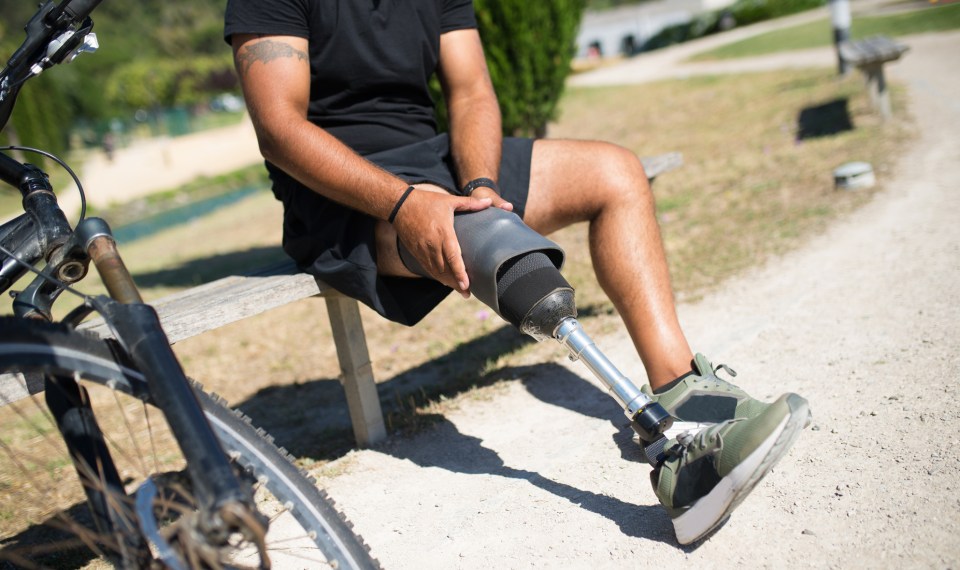Mirror therapy (MT) is a therapeutic intervention that uses a mirror to trick the brain into thinking that both limbs of the body are working properly and free of pain by reflecting the movements of the healthy limb.
It is most commonly used to treat those recovering from an amputation, but it’s also proven effective for stroke recovery in those with right- or left-sided paralysis or neglect.
“One of the biggest reasons we’re using mirror therapy is for phantom limb pain,” said Megan Lopez, a senior physical therapist at Encompass Health Rehabilitation Hospital of Fayetteville in Arkansas. “After an amputation, most experience a lot of pain, and they don’t want to move the affected limb because they’re fearful of the pain. With mirror therapy, they can visualize it moving.”
That visualization could help retrain the brain to stop sending pain signals to the affected limb, reducing and even eliminating phantom limb pain in some cases.
What is Phantom Limb Pain?
According to the Amputation Coalition, nearly 80 percent of those recovering from an amputation experience phantom limb pain. It can be short-term or chronic, meaning it lasts for more than two years.
After limb loss, the nerves that send signals to the brain for the impacted part of the body remain, even though the limb is gone. This causes confusion in the brain, so it begins to send signals back to the amputated limb causing the phantom pain. Sensations from phantom limb pain can range anywhere from tingling to burning and cramping.
“The message is still being sent down the limb, even though it’s not there anymore,” said Cheryl Hicks, a physical therapist and therapy team leader at New England Rehabilitation Hospital of Portland, a joint venture of Maine Medical Center and Encompass Health. “The pain doesn’t have a loop to send back and turn it off. An amputation is an abrupt procedure. The nerves are traumatized, and the brain doesn’t know why it has scar tissue.”
Mirror Therapy for Phantom Limb Pain
Phantom limb mirror therapy is considered a non-pharmaceutical treatment option and an alternative to opioids. It’s most effective when administered shortly after the amputation, Hicks said.
“We’re mainly working with phase one pain, usually one to three weeks out from surgery,” she said. “I haven’t had a lot of successes with patients who have had pain for more than six months. Usually that pain stays turned on.”
MT is typically used to treat pain associated with lower limb loss, but it’s also beneficial for the upper extremities.
Using either a mirror box or a long door mirror, the mirror is placed mid-body, facing away from the affected limb. Sessions are usually conducted twice a day and last about 15 minutes each. During them, light range of motion exercises are performed by the unaffected limb as a patient watches the movements reflected in the mirror.
The therapy can be performed sitting, standing or laying down. Hicks prefers to use it with patients in a quiet room with soft music, depending on the patient’s taste, to allow them to relax and better envision what the limb should look like.
In many cases, Hicks said the results and reduction in pain are almost immediate. “It’s not unusual for them to get a little teary-eyed because they have two legs and two feet,” Hicks said.
If a patient is not responding after about three sessions, though, Hicks said it’s time to try a different intervention.
Where Should MT Take Place?
Initially, MT should be conducted by a skilled physical therapist, who can explain the process and walk you through different exercises. Lopez said some patients are hesitant, but once the process is explained they are willing to try it.
In an inpatient rehabilitation hospital, MT for phantom limb pain can be used in combination with other therapeutic interventions including additional physical and occupational therapy to help you adjust to life after an amputation.
In addition to receiving three hours of therapy a day, five days a week in the inpatient rehabilitation setting, you will also have 24-hour nursing care, and nurses trained in wound care.
After a stay at an inpatient rehabilitation hospital, you can continue to manage your phantom limb pain with mirror therapy at home.
The content of this site is for informational purposes only and should not be taken as professional medical advice. Always seek the advice of your physician or other qualified healthcare provider with any questions you may have regarding any medical conditions or treatments.



